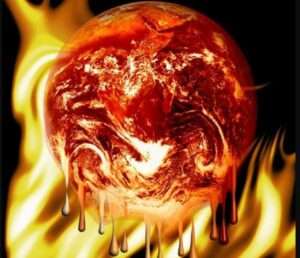“To be extremely clear: this is not normal,” said the Union of Concerned Scientists as nearly 120 million people in the U.S. faced extreme weather alerts.

The weekend heat forecast in the United States on Friday signaled that new temperature records being set in quick succession is a trend that is here to stay, as meteorologists predicted California’s Death Valley could reach 131°F on Sunday.
If the National Weather Service’s projection is correct, the desert region will endure the hottest temperature in the planet’s recorded history.
The desert set the present global temperature record in 2020, reaching 130°F. Climatologists say an often-cited heat record of 134°F, allegedly observed in Death Valley in 2013, was likely not a credible recording.
The agency warned of the potential new record one day after the National Oceanic and Atmospheric Administration (NOAA) and the National Aeronautics and Space Administration (NASA)said that last month was the hottest June since scientists began keeping heat records in the 1880s.
On Wednesday, the World Meteorological Organization announced that last week was the planet’s hottest on record.
[pullquote]”With extreme heat on the rise because of climate change, it is critical that policymakers and regulators take steps to ensure our communities are protected.”[/pullquote]
In the United States, a heat dome—in which an area of high pressure traps heat underneath it—now stretches from the West Coast to the Southeast. The Union of Concerned Scientists (UCS) included Death Valley in its map of regions currently facing extreme heat on Friday, but people in the area are just some of the more than 118 million in the U.S. who are currently subject to “extreme weather alerts,” the group said.
“To be extremely clear: this is not normal,” said UCS. “Decades of dependence on fossil fuels, decades of deception and obstruction on the part of the fossil fuel industry, and decades of inaction by policymakers who have been in their thrall have landed us where we are today. This has to stop.”
With nearly 120 million people at risk of wildfires, flooding, extreme heat, or tropical storms, the UCS has dubbed the time between roughly May and October as “Danger Season” and warned that “climate change impacts in the United States are at their peak and increasingly likely to collide with one another” in the next several months.
During this danger season, said the group, 43% of extreme heat alerts have been made more likely by the climate crisis and the continued extraction of fossil fuels.
“With extreme heat on the rise because of climate change, it is critical that policymakers and regulators take steps to ensure our communities are protected and our infrastructure is more resilient to extreme weather; that fossil fuels are quickly and sharply phased down while we rapidly transition to clean energy; and fossil fuel companies are held accountable for the damage their products have caused,” said UCS.
California Natural Resources Secretary Wade Crowfoot added that the climate emergency is “supercharging” heatwaves and making wildfires more frequent and extreme in the state.
“As we get deeper into the summer and vegetation that grew up during the wet spring dries out, we are seeing an uptick in wildfire activity,” he said in a statement.
Common Dream’s work is licensed under a Creative Commons Attribution-Share Alike 3.0 License. Feel free to republish and share widely.
